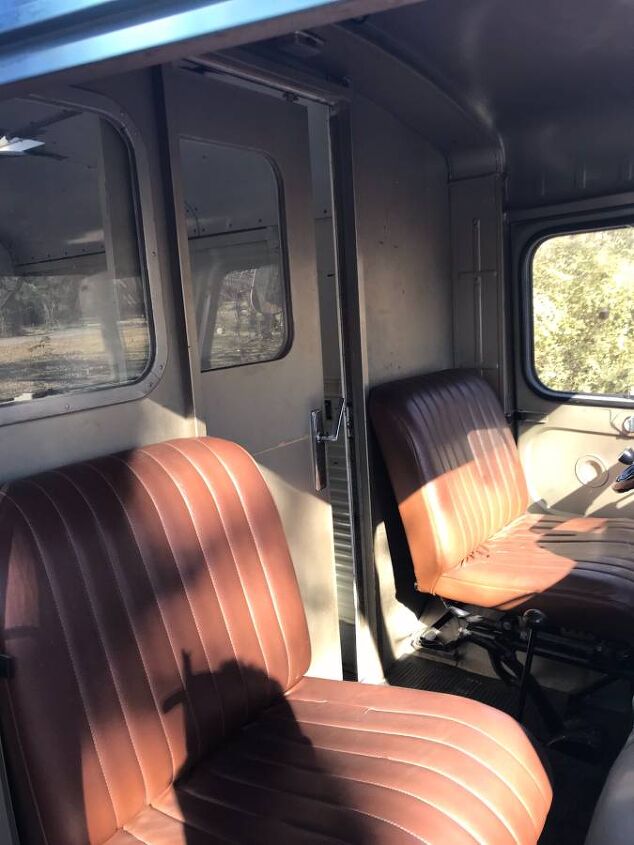Rare Rides: A Citron Van From 1972 Says HY

We’ve lately had some fun Citroën times here at Rare Rides, with the most recent entry being a custom-built and luxurious ID19 coupe. Today’s Rare Ride is not quite as luxurious, and there’s certainly nothing bespoke about it. But it is interesting, and it also looks like a corrugated shed on wheels.
Say hello to HY.
The HY was a successor to Citroën’s very first utility van, the TUB. Introduced in 1939, the TUB (Traction Utilitaire Basse) was derived from the front-drive, unibody Traction Avant sedan. Citroën’s co-manager, Pierre-Jules Boulanger, reached out to customers to see what they wanted in a utility van, then set strict requirements for the new offering. Load carrying capacity needed to be greater than other car-based vans. There also had to be more space for cargo, and the cargo area was to be tall enough to accommodate standing in it. As well, drivers needed access to the rear cargo area without exiting the van, and there was to be a door on the side for curbside loading.
The costs of the project were kept low by using the Traction Avant’s platform, and the front-drive layout allowed for a flat cargo area. While the van was a success upon its introduction in 1939, it was short-lived due to the start of World War II.
After the war, Citroën started on a new van design. The HY entered production in 1947, using the same front-drive unibody format as the TUB. Independent suspension meant the loading floor was closer to the ground, and an interior standing height of 6 feet was maintained in the new model. The composition and design of the HY’s body was inspired by German Junkers airplanes. Citroën fashioned a simple pressed-steel body made of ribbed metal to add strength without additional weight. There were structural supports on the inside of the cargo area, while the welded floor could hold the weight of a horse.
Mechanically the HY was related to Citroën’s passenger cars, borrowing de-tuned engines from the Traction Avant and the DS. The 1.9-liter four-cylinder engine was always mated to a three-speed manual transmission, and HY vans had a top speed under 60 miles an hour. The HY remained in production with few changes for decades, only making way for a new model after 1981. While Citroën sold them all over the world, the Chicken Tax removed new HYs from American roads after 1962. Sadly, the HY’s replacement in ’81 was a rebadged Fiat Ducato. Today it’s called the Citroën Relay, but you call it the Ram ProMaster.
The 1972 example presented here is for sale in Texas. In clean, original condition, it asks $29,900.
[Images: seller]

Interested in lots of cars and their various historical contexts. Started writing articles for TTAC in late 2016, when my first posts were QOTDs. From there I started a few new series like Rare Rides, Buy/Drive/Burn, Abandoned History, and most recently Rare Rides Icons. Operating from a home base in Cincinnati, Ohio, a relative auto journalist dead zone. Many of my articles are prompted by something I'll see on social media that sparks my interest and causes me to research. Finding articles and information from the early days of the internet and beyond that covers the little details lost to time: trim packages, color and wheel choices, interior fabrics. Beyond those, I'm fascinated by automotive industry experiments, both failures and successes. Lately I've taken an interest in AI, and generating "what if" type images for car models long dead. Reincarnating a modern Toyota Paseo, Lincoln Mark IX, or Isuzu Trooper through a text prompt is fun. Fun to post them on Twitter too, and watch people overreact. To that end, the social media I use most is Twitter, @CoreyLewis86. I also contribute pieces for Forbes Wheels and Forbes Home.
More by Corey Lewis
Latest Car Reviews
Read moreLatest Product Reviews
Read moreRecent Comments
- Jeff “So, the majority of our products are either ICE vehicles or intended to utilize those multi-energy platforms that we have. This is a great opportunity for us, compared to our peers, having the multi-energy platforms for all of our products in development and having the agility to move between them,” she said. From what is stated about the next generation Charger it will be released as a 2 door EV and then as a 4 door with the Hurricane turbo straight 6. I assume both the 2 door and 4 door is on the same platform.
- Brendan Duddy soon we'll see lawyers advertising big payout$ after getting injured by a 'rogue' vehicle
- Zerofoo @VoGhost - The earth is in a 12,000 year long warming cycle. Before that most of North America was covered by a glacier 2 miles thick in some places. Where did that glacier go? Industrial CO2 emissions didn't cause the melt. Climate change frauds have done a masterful job correlating .04% of our atmosphere with a 12,000 year warming trend and then blaming human industrial activity for something that long predates those human activities. Human caused climate change is a lie.
- Probert They already have hybrids, but these won't ever be them as they are built on the modular E-GMP skateboard.
- Justin You guys still looking for that sportbak? I just saw one on the Facebook marketplace in Arizona






































Comments
Join the conversation
Citroen belongs same category as Renault Estafette. It was of course French and Renault made it a long time 1959-1980, about 500.000 Estafette's were made. Almost same category belongs also Peugeot J7 and Morris J2.
That's it: www.imcdb.org/v009223.html